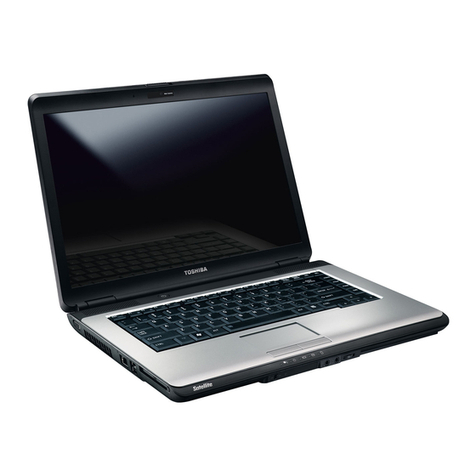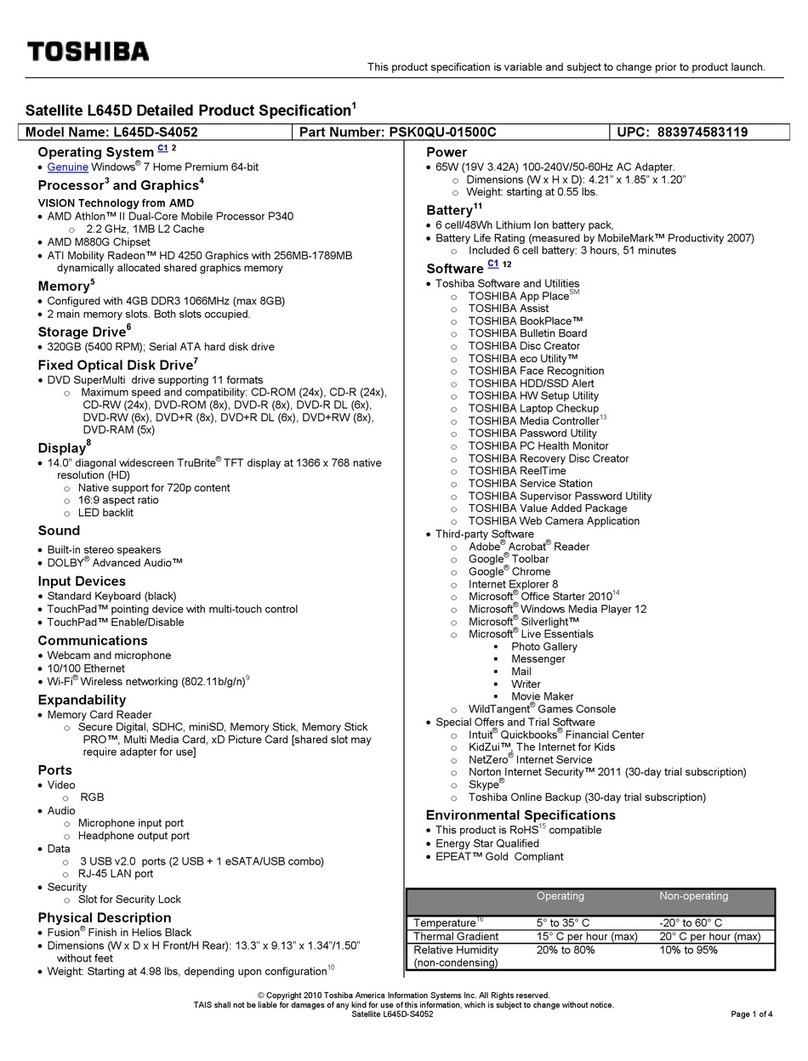Toshiba Portege 610CT User manual
Other Toshiba Laptop manuals

Toshiba
Toshiba L655-S51121 User manual
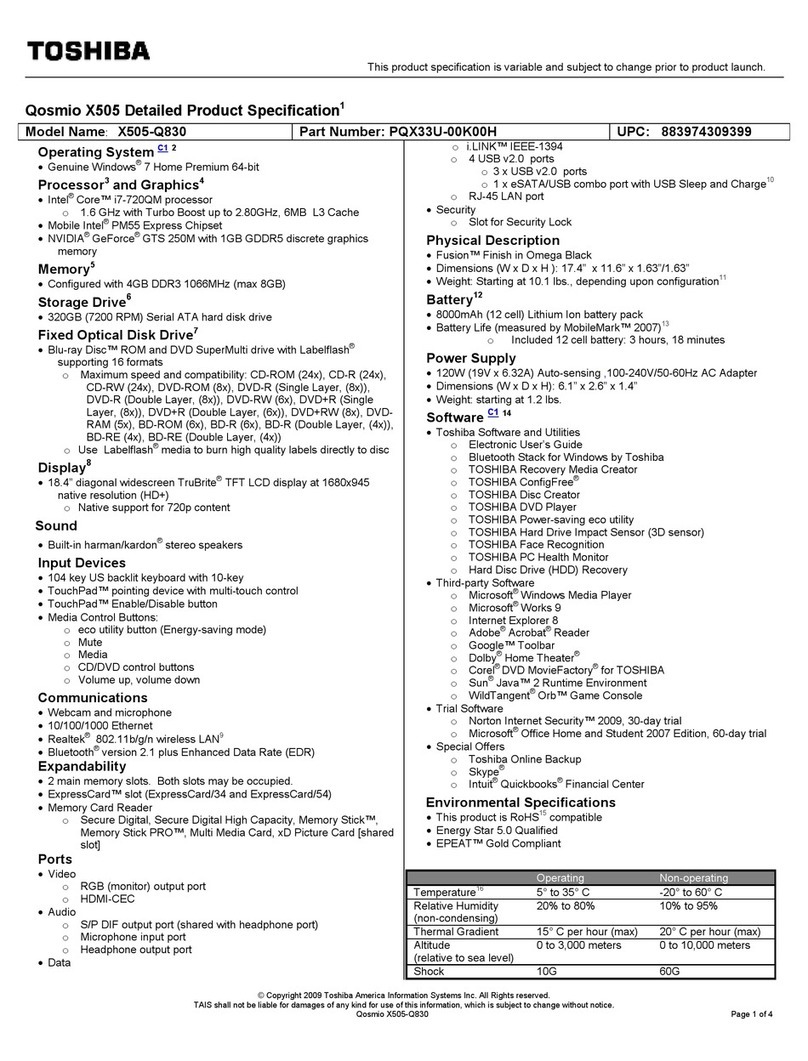
Toshiba
Toshiba X505-Q830 User manual
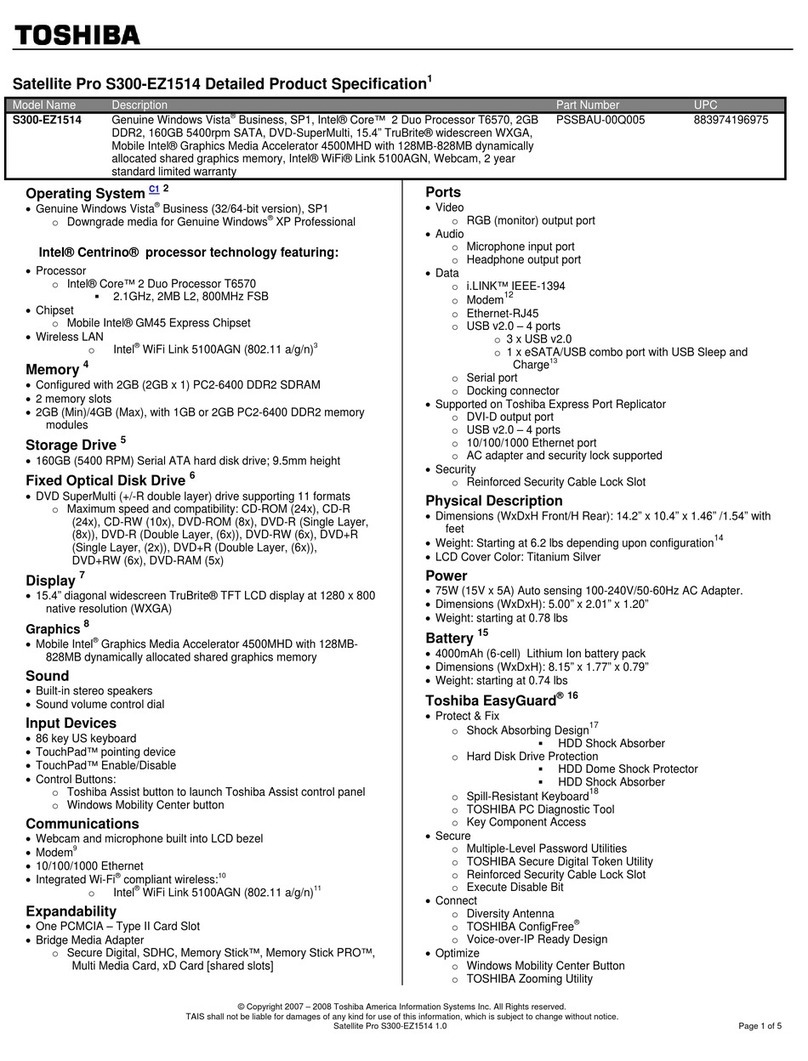
Toshiba
Toshiba Satellite Pro S300-EZ1514 User manual

Toshiba
Toshiba L640-BT2N13 User manual
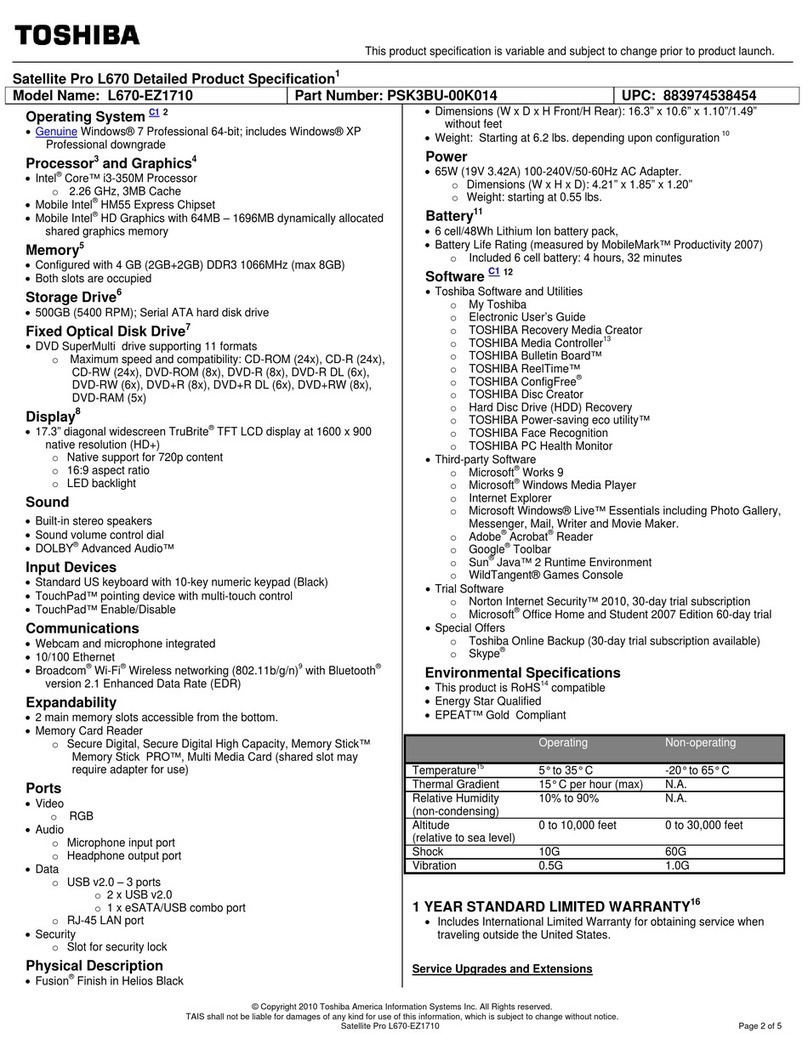
Toshiba
Toshiba L670-EZ1710 User manual
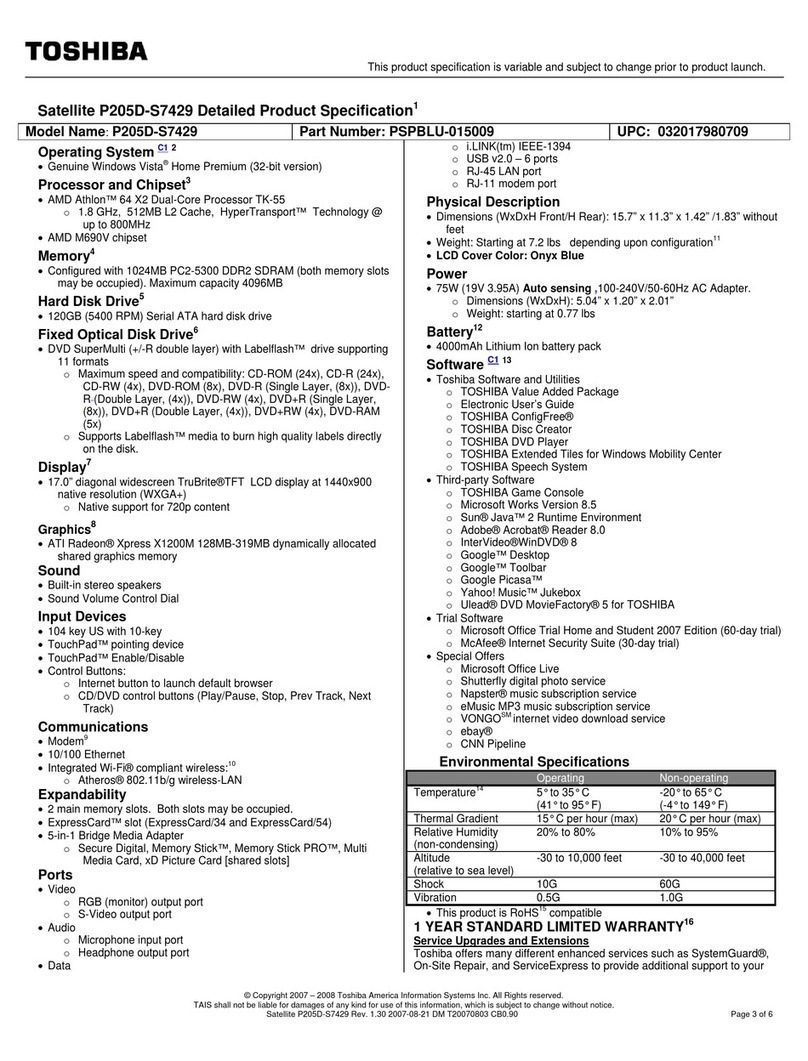
Toshiba
Toshiba P205D User manual

Toshiba
Toshiba PSAA8C-17202C User manual
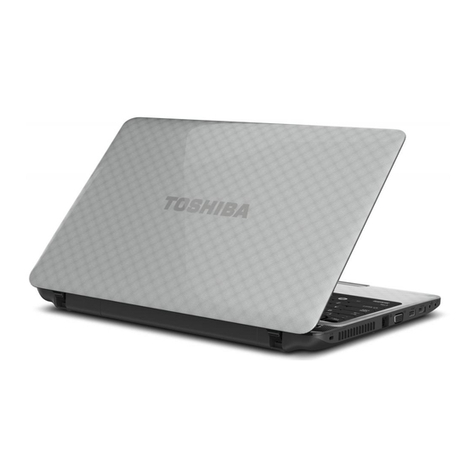
Toshiba
Toshiba C605-SP4101A User guide

Toshiba
Toshiba Qosmio M0026290 User manual
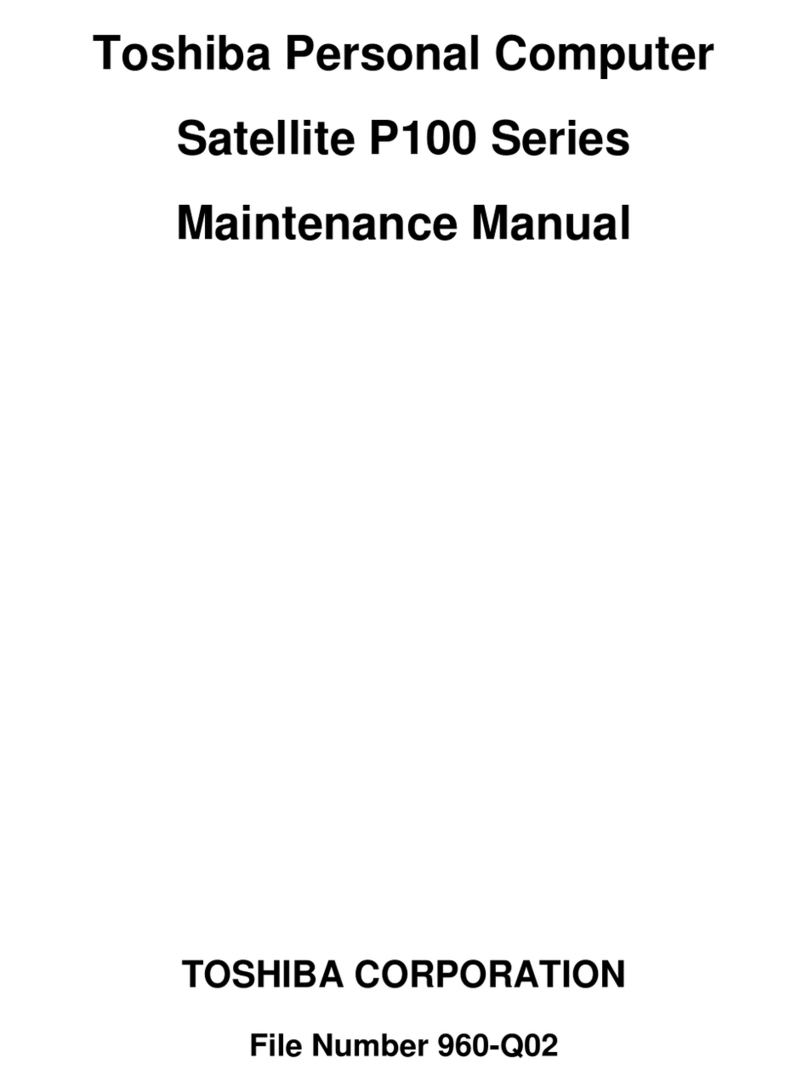
Toshiba
Toshiba Satellite P100 Series User manual

Toshiba
Toshiba 1130-S155 User manual
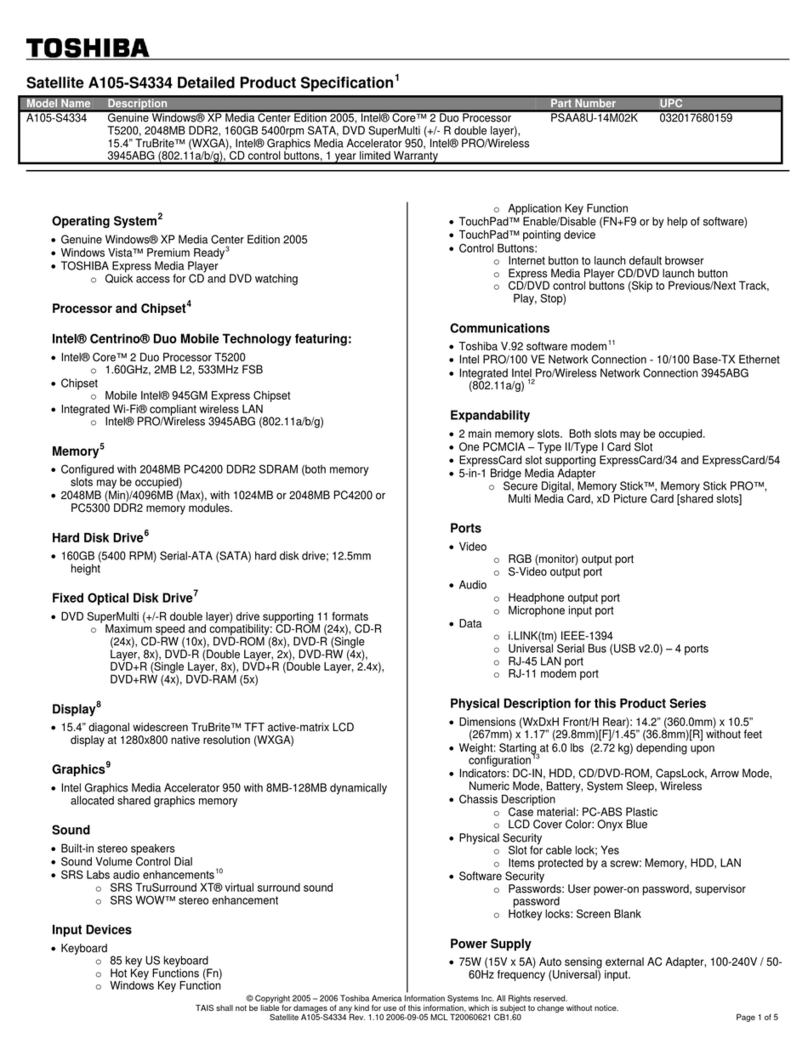
Toshiba
Toshiba A105-S4334 - Satellite - Core 2 Duo 1.6 GHz User manual
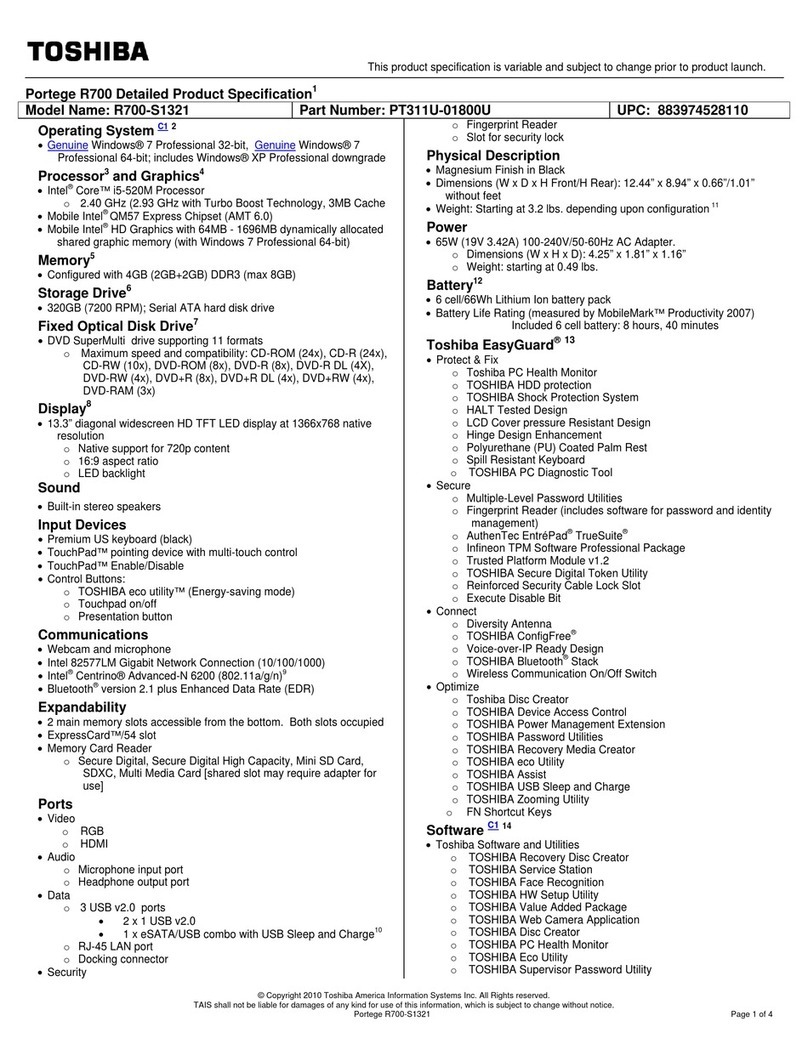
Toshiba
Toshiba R700-S1321 User manual
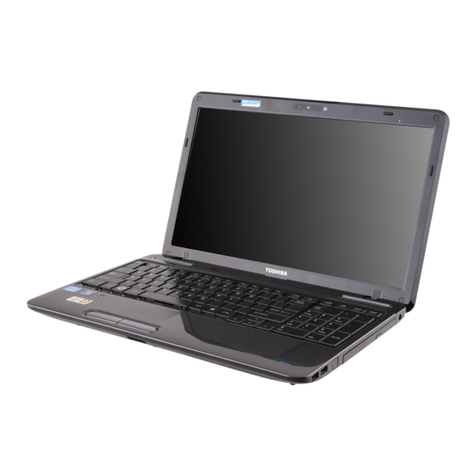
Toshiba
Toshiba Satellite L655 User guide

Toshiba
Toshiba M500-ST5405 User manual
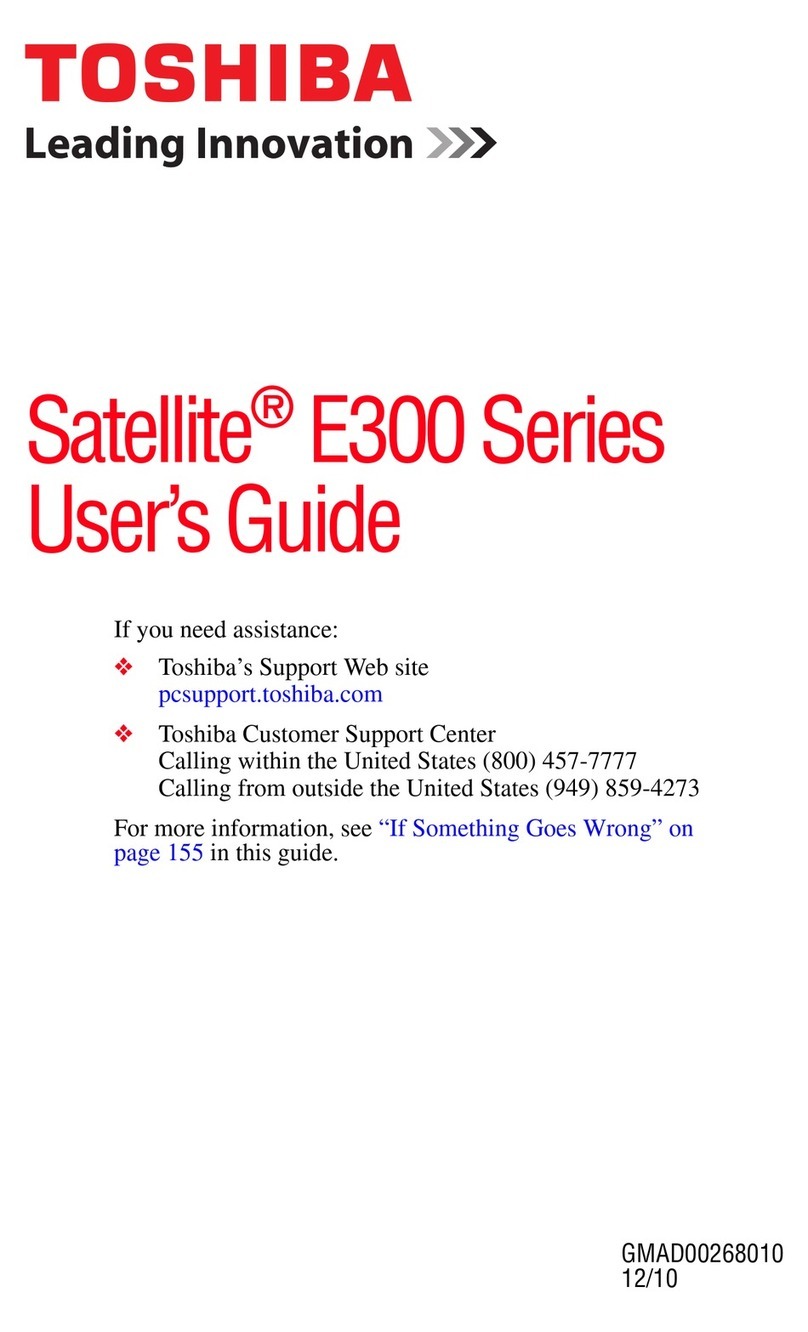
Toshiba
Toshiba E305-S1990X User manual
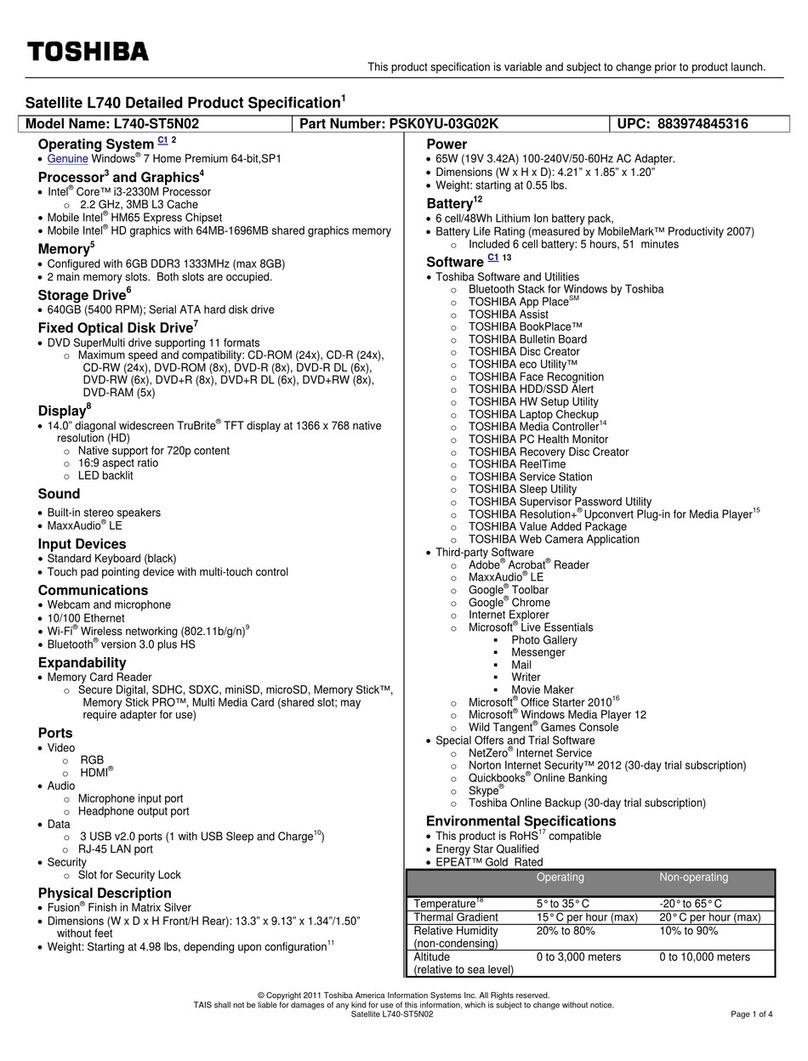
Toshiba
Toshiba Satellite L740-ST5N02 User manual
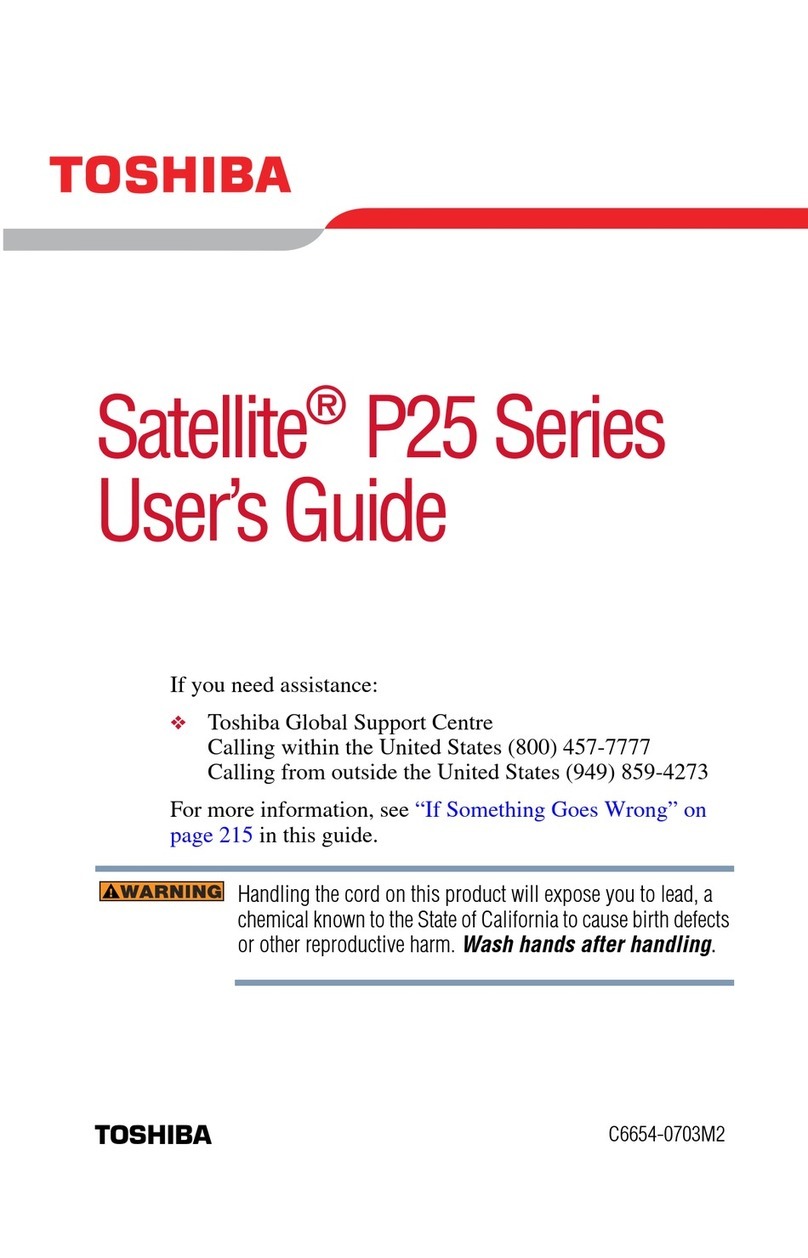
Toshiba
Toshiba Satellite P25-S609 User manual
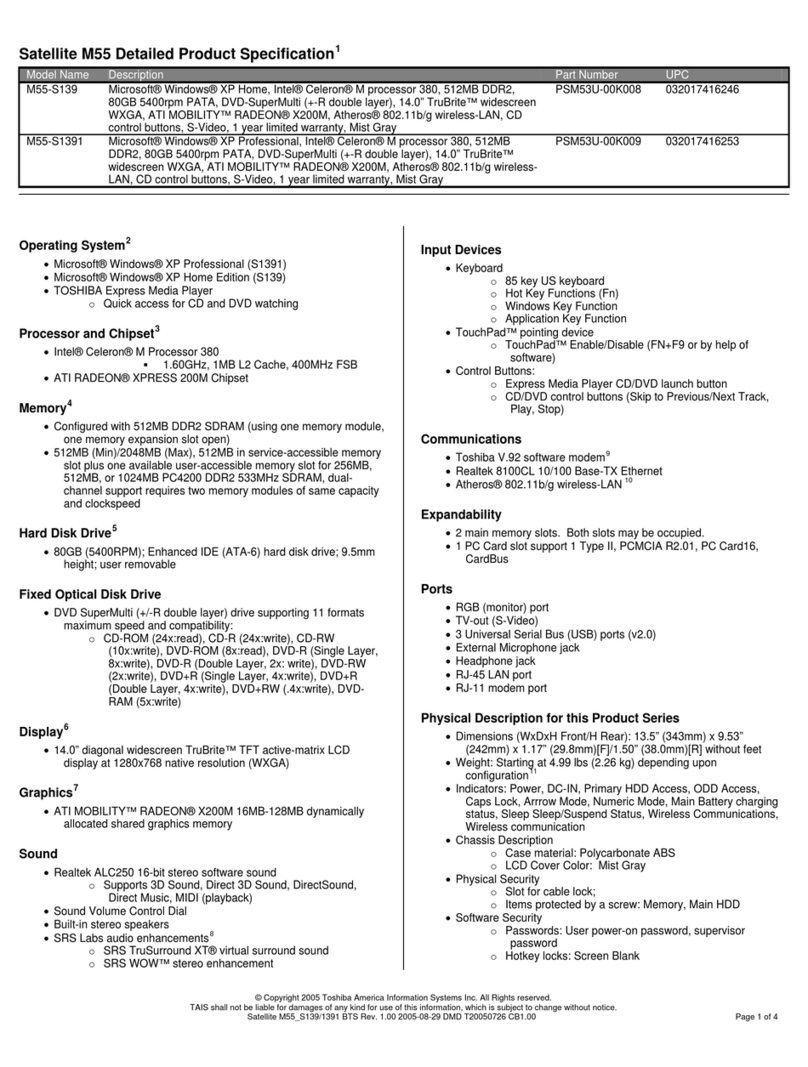
Toshiba
Toshiba M55-S139 User manual
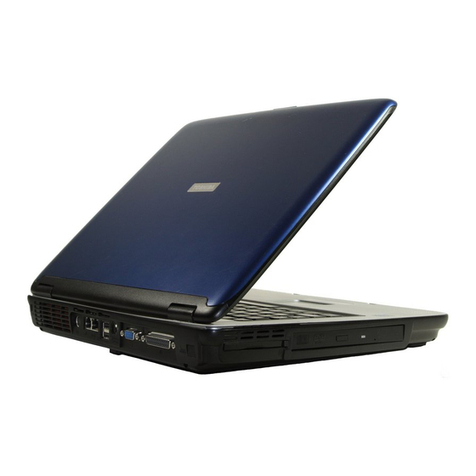
Toshiba
Toshiba Satellite A60 Series Firmware update


